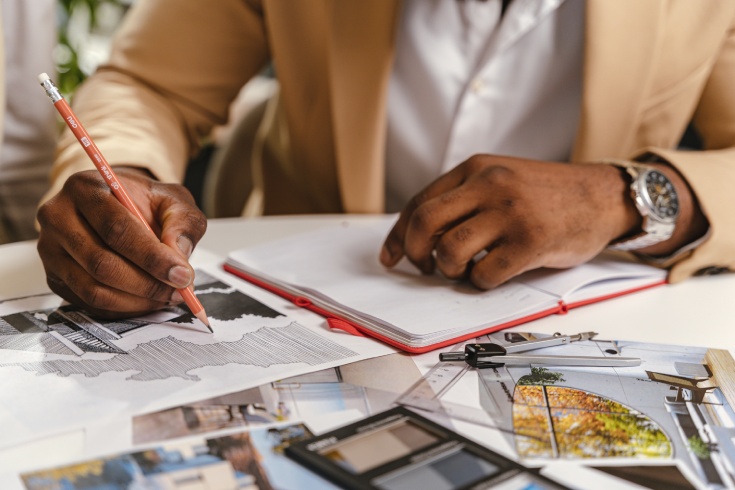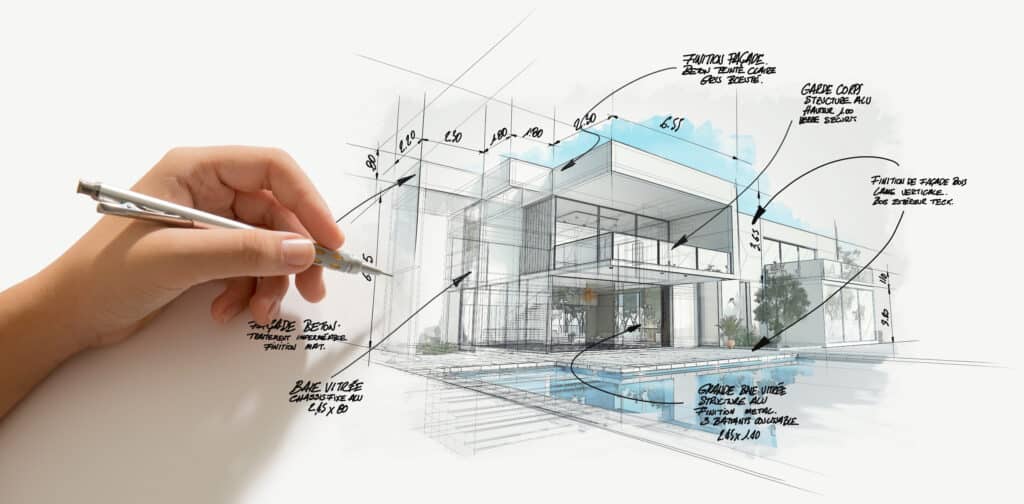Architect Salary Overview by Region and Level
Architect Salary Overview by Region and Level
Blog Article
Comprehending the Diverse Occupation Paths Available for Aspiring Architect
As a hopeful Architect, you have a globe of profession courses waiting for you. Whether you're drawn to standard architecture or the nuances of sustainable style, there's a particular niche that straightens with your interests.
Traditional Design: Creating Structures and Frameworks
Traditional style focuses on making buildings and structures that mix functionality with visual appeal. Your layouts can show social heritage, showcasing local customs while satisfying modern requirements.
You'll create skills in preparing, model-making, and site analysis, permitting you to imagine and connect your ideas properly. Engaging with clients, you'll need to understand their vision and convert it into viable styles.
In addition, building codes and sustainability methods are necessary in your work, ensuring your frameworks are ecologically pleasant and secure. As you grow in your job, you'll find opportunities in property, business, and even remediation jobs, each offering one-of-a-kind obstacles. Embracing standard design leads the way for a fulfilling profession that pays homage to the past while shaping the future.
Urban Planning: Forming Neighborhoods and Public Spaces
As an ambitious Architect, you can play an essential function as a metropolitan coordinator, changing how communities function and communicate. By using community involvement approaches, you'll assure that residents have a voice fit their environment. And also, incorporating lasting layout concepts will aid create rooms that not just satisfy today's demands but likewise shield the future.
Duty of Urban Planners
While many may believe of engineers as the single enthusiasts behind structures, metropolitan coordinators play a crucial role in shaping the wider landscape of areas and public spaces. By working together with numerous stakeholders, you'll aid design parks, transportation systems, and property locations that advertise social communication and ease of access. Your proficiency in spatial layout and area characteristics enables you to envision future growth while preserving social heritage.
Area Interaction Methods
Effective area involvement techniques are important for metropolitan planners to guarantee that the voices of residents are heard and valued in the planning process. To cultivate purposeful discussion, you need to prioritize open forums and workshops where community participants can share their ideas and concerns. Use studies and social media sites to reach a more comprehensive target market, guaranteeing diverse viewpoints are consisted of. Working together with regional organizations can enhance count on and help with much deeper links. It's vital to offer clear information concerning suggested projects and decision-making processes, enabling residents to feel enlightened and encouraged. By proactively incorporating and paying attention responses, you'll develop spaces that mirror the neighborhood's requirements, eventually resulting in even more lasting and successful urban atmospheres. Accept transparency and continual dialogue for long-term influence.
Lasting Layout Concepts
When developing metropolitan rooms, incorporating sustainable design concepts is critical for developing settings that flourish both ecologically and socially. You must begin by concentrating on energy performance, making use of products that reduce waste and advertise recycling. Take into consideration incorporating green spaces, like gardens and parks, to improve biodiversity and enhance air high quality. Promoting walkability and public transportation can reduce reliance on cars and trucks, promoting a healthier community.
Designing with water preservation in mind is also essential-- think of rain yards and permeable surfaces to manage stormwater. Entailing neighborhood members throughout the planning procedure assurances that the areas you develop meet their requirements and encourage social communication. By accepting these concepts, you'll add to dynamic, sustainable urban landscapes that profit everyone.

Landscape Design: Creating Lasting Exterior Atmospheres
As you discover landscape style, you'll find vital design concepts that create useful and lovely outside spaces. Sustainable techniques play a crucial role in guaranteeing these settings thrive while minimizing ecological impact. And also, you'll discover a selection of profession opportunities that permit you to make a real distinction in how individuals interact with nature.
Style Principles in Landscape
Recognizing design concepts in landscape style is necessary for creating lasting outdoor atmospheres that balance with nature. You'll need to contemplate components like proportion, equilibrium, and range to guarantee your designs really feel natural and inviting. Including native plants not only improves biodiversity however likewise lowers water usage, making your landscape durable. Consider the flow of area and just how people engage with it; pathways and seating areas need to invite exploration and relaxation. In addition, take note of seasonal adjustments, making with materials that complement the surroundings year-round (Architect). By focusing on sustainability and appearances, you can create outside areas that enhance the neighborhood and promote wellness. Welcoming these concepts will certainly establish a solid foundation for your profession in landscape design.
Lasting Practices Review
Lasting methods in landscape design not only concentrate on looks yet likewise prioritize ecological wellness and source conservation. By integrating indigenous plants, you enhance biodiversity and reduce the need for chemical fertilizers and chemicals. Carrying out effective irrigation systems helps conserve water and decreases overflow, safeguarding neighboring ecological communities. You can design rooms that promote dirt health and wellness, such as practicing and making use of organic products permaculture concepts. Additionally, including eco-friendly infrastructure, like rainfall gardens and permeable sidewalks, aids in stormwater administration and decreases city heat. When you develop outdoor settings with sustainability in mind, you click this site add to a healthier earth and give spaces that cultivate neighborhood link. Inevitably, these practices ensure your styles benefit both people and the setting for years to find.
Occupation Opportunities Expedition
With a strong foundation in sustainable practices, landscape design provides a variety of job courses that enable you to make a significant effect on the environment. Urban organizers usually work together with landscape architects to produce eco-friendly spaces in urban setups, improving city livability. If you're passionate concerning education, think about ending up being a landscape architecture teacher, motivating future generations.
Sustainable Style: Focusing on Eco-Friendly Practices
As you discover your profession in design, embracing eco-friendly techniques can set you apart in an affordable field. Lasting design concentrates on creating structures that reduce environmental effect while enhancing passenger well-being. By integrating renewable products, energy-efficient systems, and sustainable building strategies, you'll add to a greener future.
Begin by acquiring expertise of green qualifications like LEED or BREEAM, which can bolster your credentials. Take into consideration exactly how all-natural light, ventilation, and thermal effectiveness can maximize layout. Collaborate with designers and ecological experts to introduce services that lower waste and preserve resources.
Do not neglect the significance of area participation-- interesting local stakeholders can inspire styles that balance with the setting. As customers progressively focus on sustainability, your knowledge in green techniques will not only draw in tasks yet also fulfill your passion for accountable style. Embrace this essential element of the occupation, and view your occupation prosper.
Historical Conservation: Shielding and Recovering Social Heritage
While you start on your architectural journey, consider the essential role of historical conservation in maintaining our social heritage. This area focuses on the defense and restoration of substantial structures, websites, and structures that tell the stories of our past. By taking part in historical conservation, you'll assist secure the architectural heritage that forms community identification.
As a historical preservation Architect, you'll evaluate historical value and examine the condition of frameworks. You'll work closely with chroniclers and guardians to ensure genuine reconstruction methods are employed. This occupation path enables you to blend creativity with study, enabling you to design options that respect initial materials and workmanship.
Your work not just adds to sustainability by recycling existing buildings however also cultivates a sense of satisfaction within areas. Embracing this path will certainly aid you come to be a guardian of history, maintaining the tales and aesthetics that improve our lives.
Inside Architecture: Enhancing Indoor Spaces
Historical preservation and interior architecture both share a commitment to improving the developed atmosphere, but they concentrate on various facets. While historic preservation highlights keeping a structure's social and historic value, indoor architecture nos in on maximizing interior spaces see this page for capability and appearances.
As an ambitious Architect, you'll discover that indoor style allows you to blend creativity with technological abilities. You'll make spaces that not just look good yet also promote convenience and efficiency. This field involves understanding exactly how light, shade, and materials connect within a space, impacting state of mind and functionality.
You'll service numerous jobs, from residential homes to business workplaces, guaranteeing that each environment satisfies the needs of its owners. By prioritizing user experience, you can change insides right into functional and inspiring areas, making a substantial influence on how people interact with their surroundings. Welcome the opportunity to enhance indoor atmospheres and shape the way individuals live and function.
Industrial Design: Merging Performance With Appearances
Industrial style plays a crucial function in producing products that perfectly mix aesthetic appeals with capability, ensuring that what you use daily is not just visually appealing yet likewise functional. As a hopeful Architect, you can engage yourself in this area, concentrating on developing everything from furnishings to consumer electronic devices. Your job involves understanding customer requirements, products, and producing processes, enabling you to produce innovative remedies that improve day-to-day experiences.
In industrial layout, you'll usually work together with online marketers, makers, and engineers, making sure that your designs are not only attractive however additionally possible. You'll discover to balance form and function, focusing on usability without compromising design. By developing your abilities in mapping out, 3D modeling, and prototyping, you'll be well-equipped to bring your ideas to life. This occupation course offers a dynamic atmosphere where imagination satisfies usefulness, making it a rewarding choice for designers curious about forming the products of tomorrow.
Often Asked Concerns
What Educational Credentials Do I Need to Come To Be a Designer?
To become a browse this site designer, you'll need a professional level in design, usually a Bachelor's or Master's. Additionally, you'll need to finish a teaching fellowship and pass the Architect Enrollment Assessment to practice legitimately.
Exist Accreditation Requirements for Various Architectural Career Paths?
Yes, there're qualification requirements for various building paths. Architect. You'll require to pass examinations, total internships, and occasionally seek specialized training, depending on your picked focus, like landscape style, metropolitan layout, or historic preservation
What Software Abilities Are Essential for Architects Today?

How Can I Gain Practical Experience While Studying Design?
You can acquire sensible experience by interning at building firms, joining design competitors, volunteering for area jobs, or collaborating with schoolmates on real-world assignments. These chances improve your skills and construct important links in the industry.
What Task Opportunities Exist Outside Typical Style Firms?
You can explore various work possibilities outside conventional design firms, like city planning, interior decoration, landscape style, construction monitoring, realty growth, and even functions in sustainability consulting. Each deals special obstacles and incentives.
Whether you're drawn to conventional design or the subtleties of sustainable design, there's a niche that straightens with your rate of interests.When making urban areas, integrating lasting layout principles is crucial for producing atmospheres that thrive both ecologically and socially.As you explore landscape design, you'll discover important style concepts that develop beautiful and functional outdoor spaces.Comprehending style principles in landscape design is crucial for creating sustainable outside atmospheres that balance with nature.In industrial style, you'll commonly work together with suppliers, marketers, and designers, making sure that your styles are not only gorgeous but also feasible.
Report this page